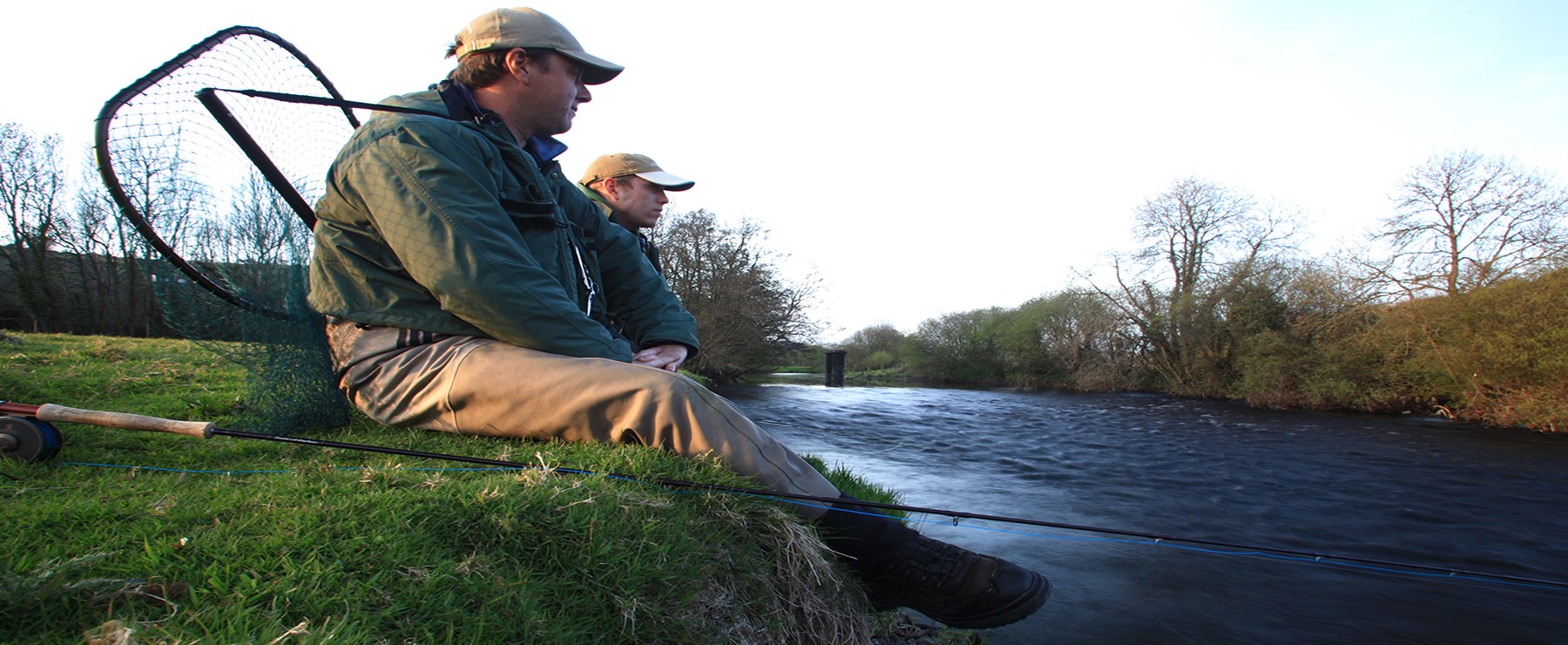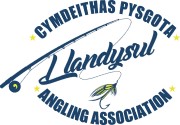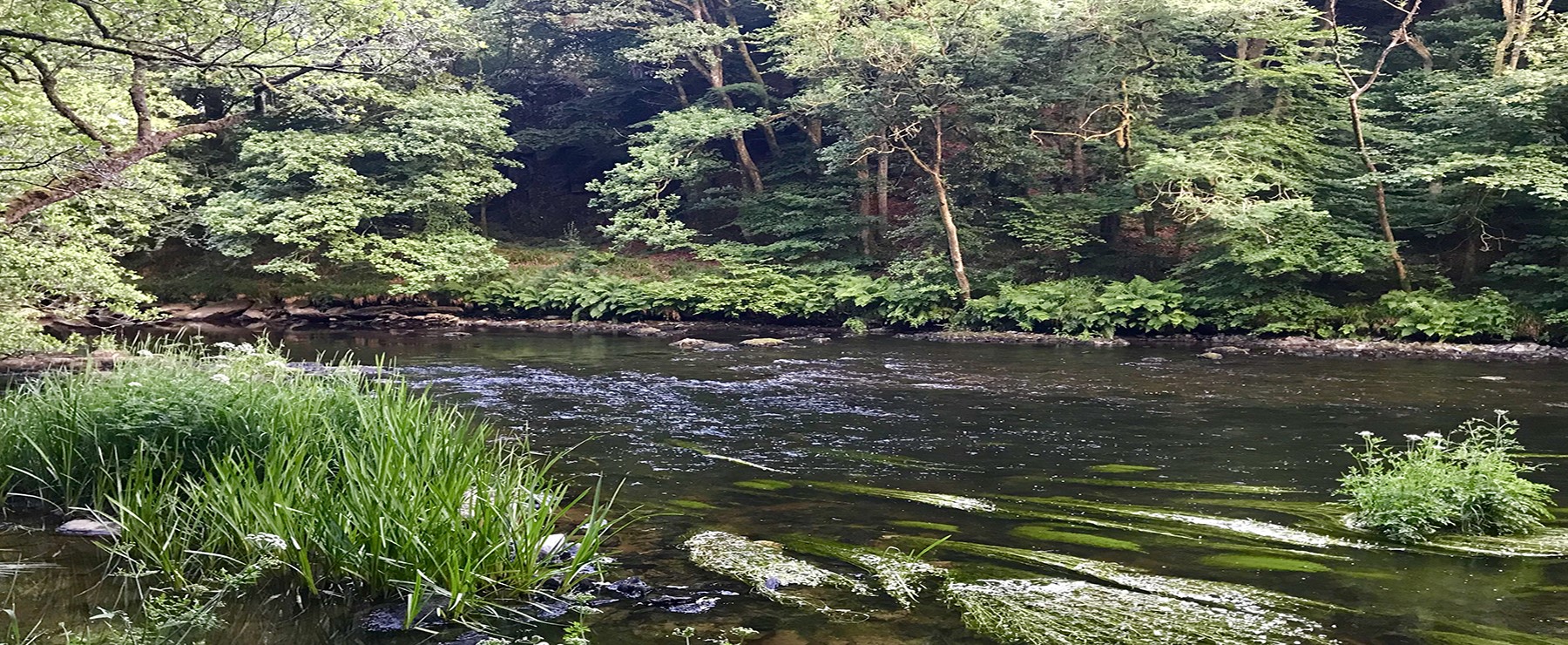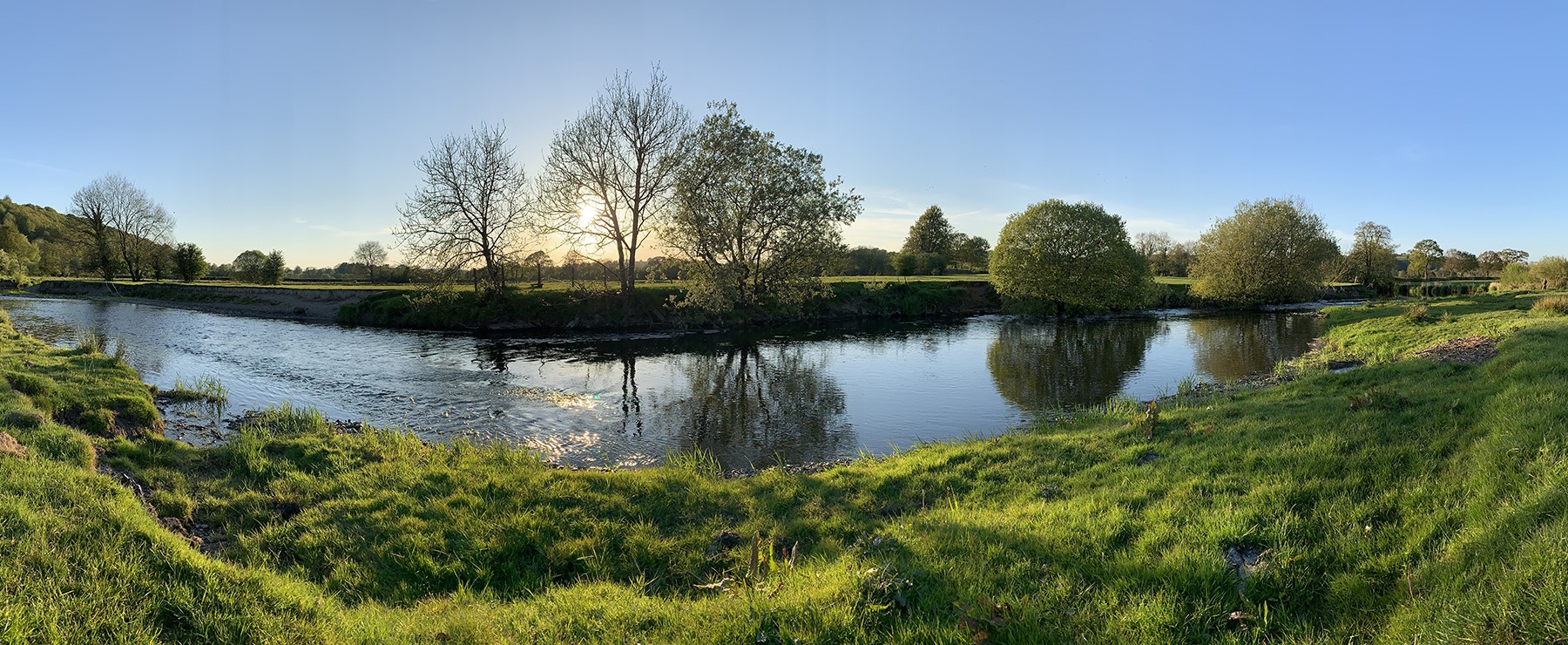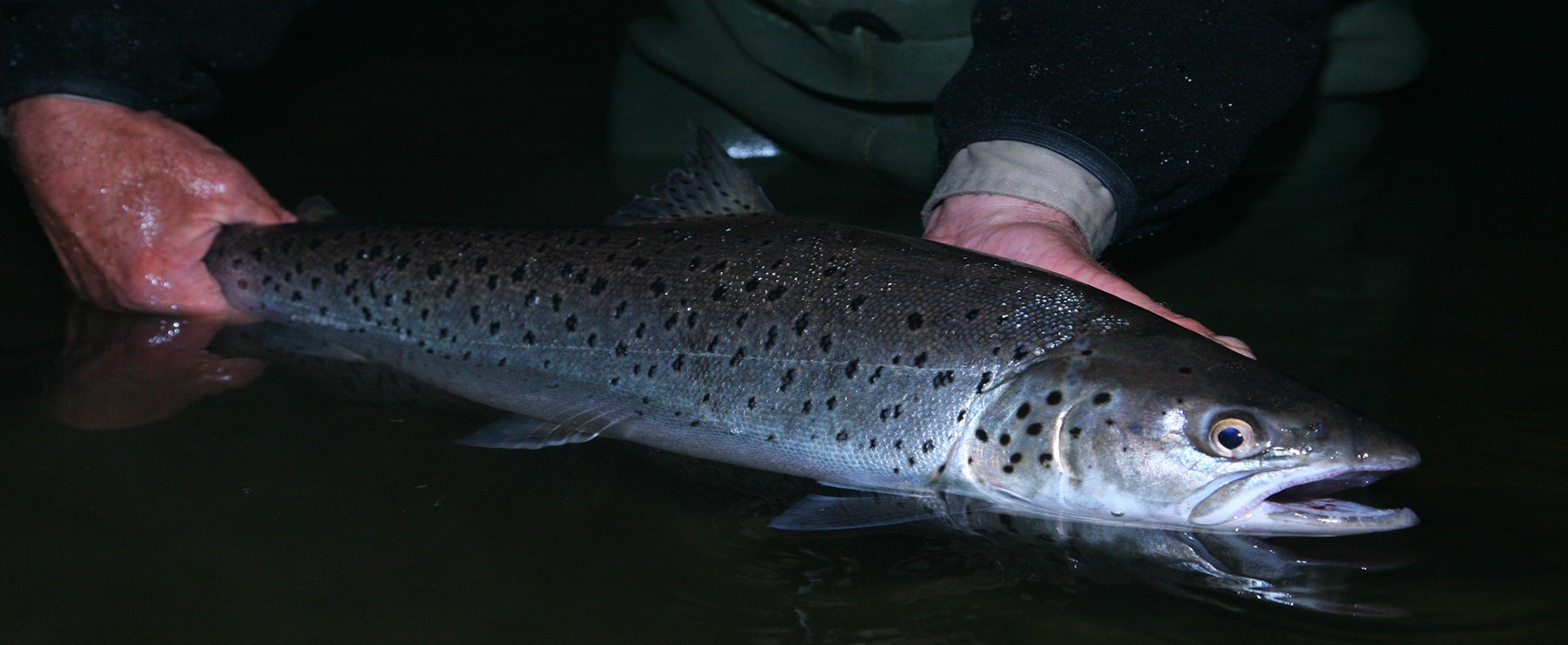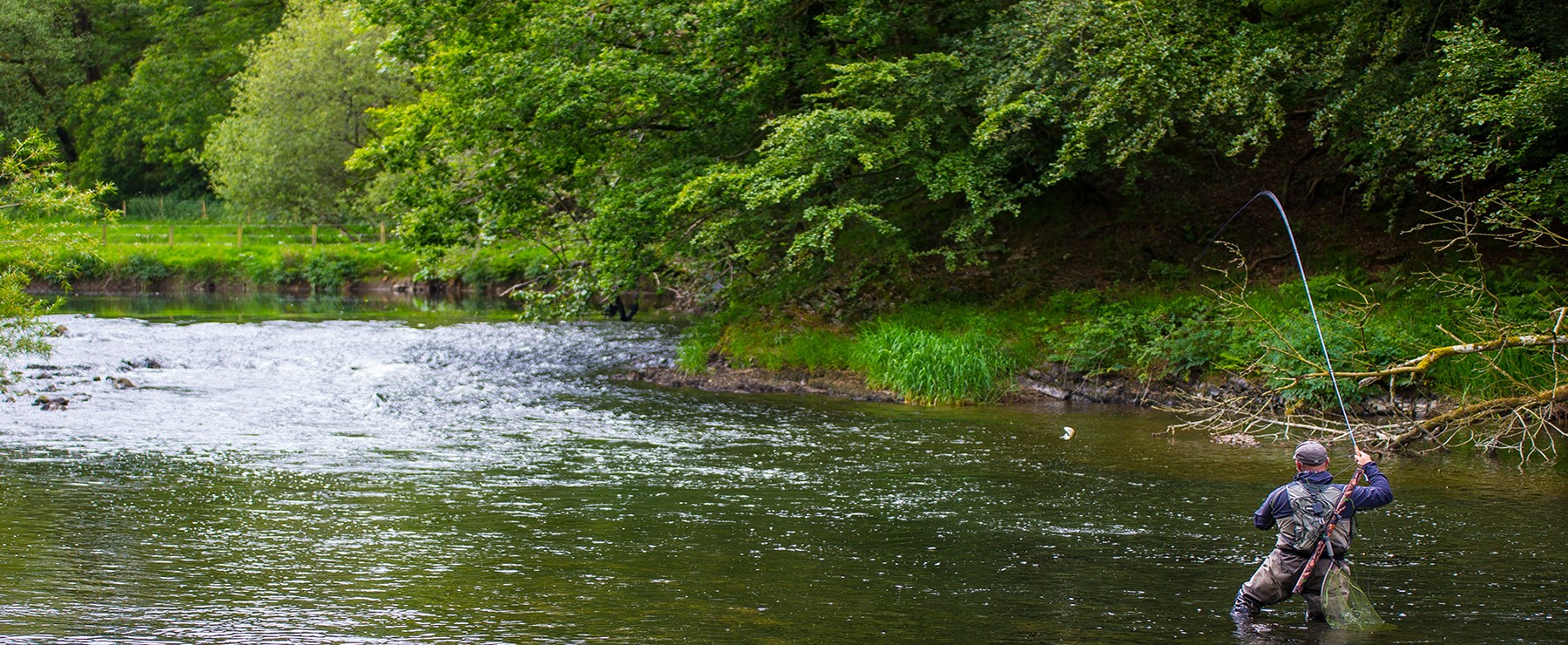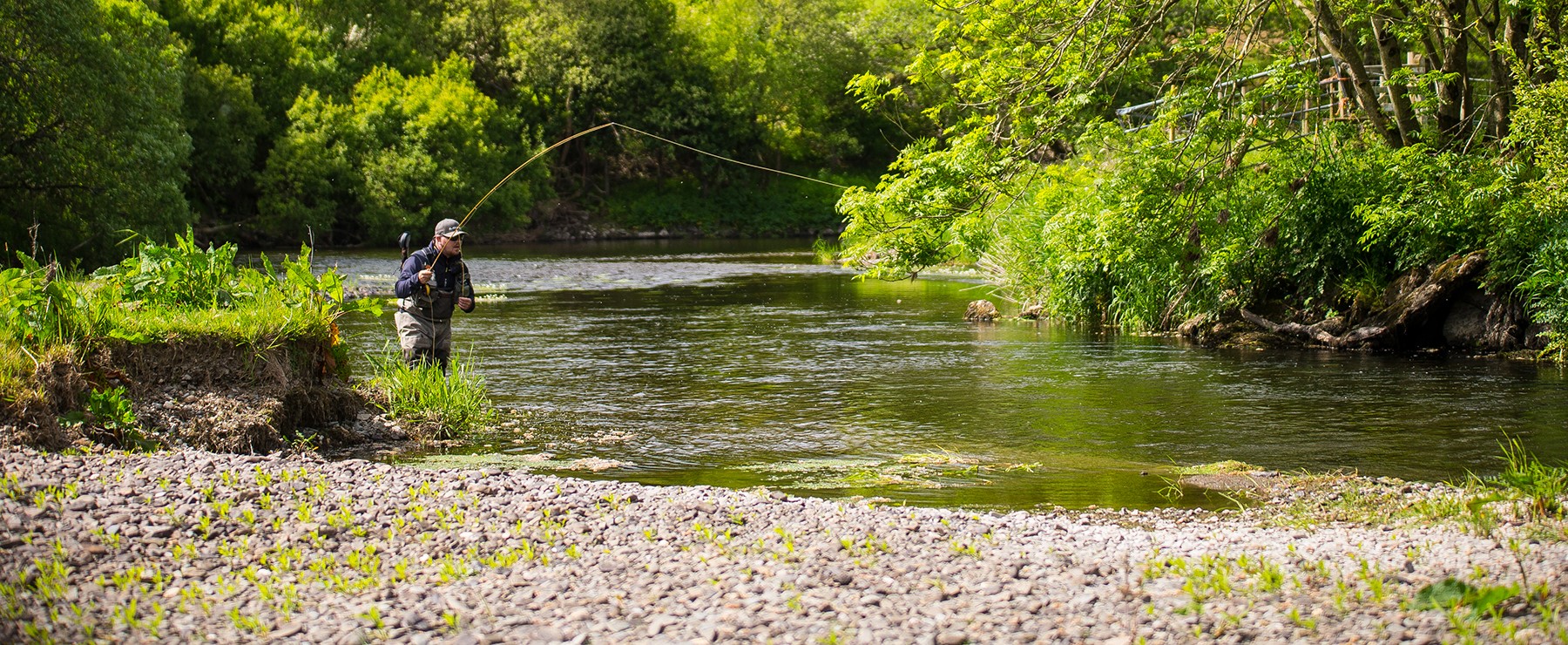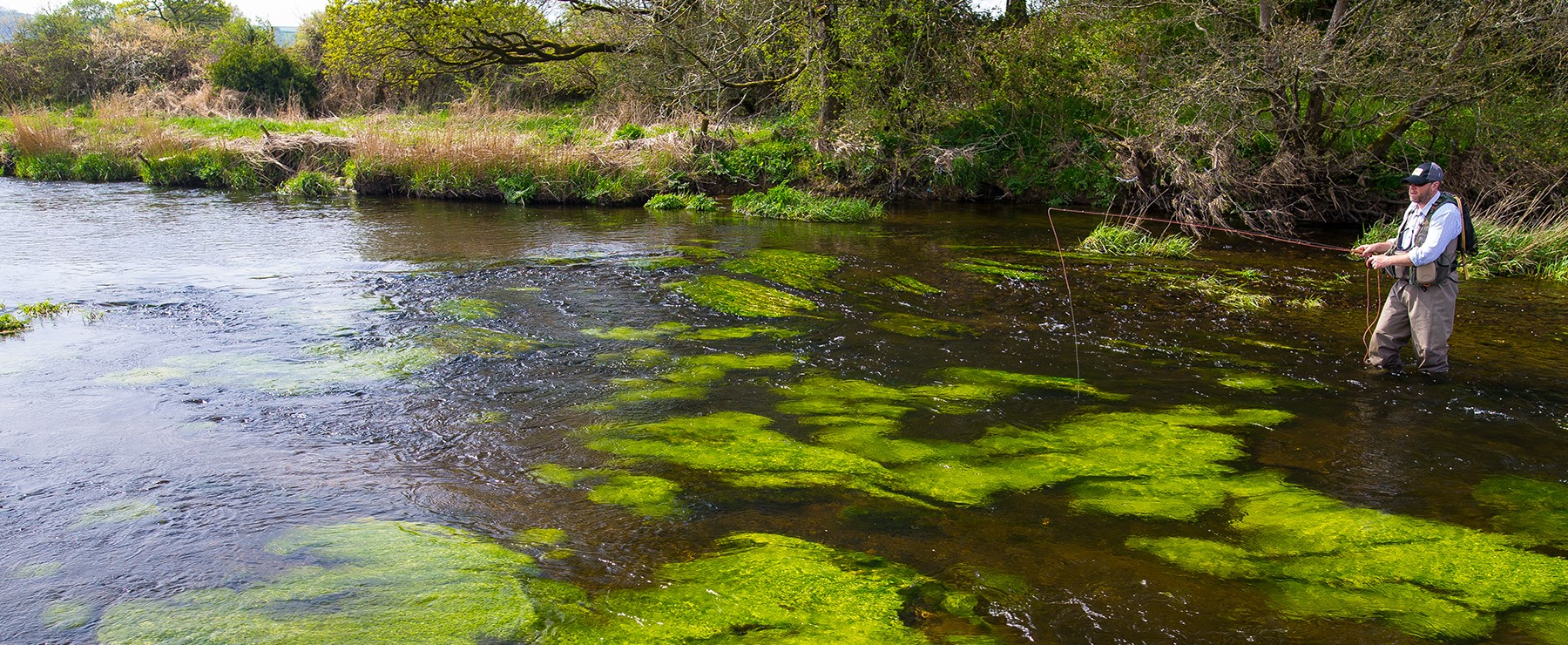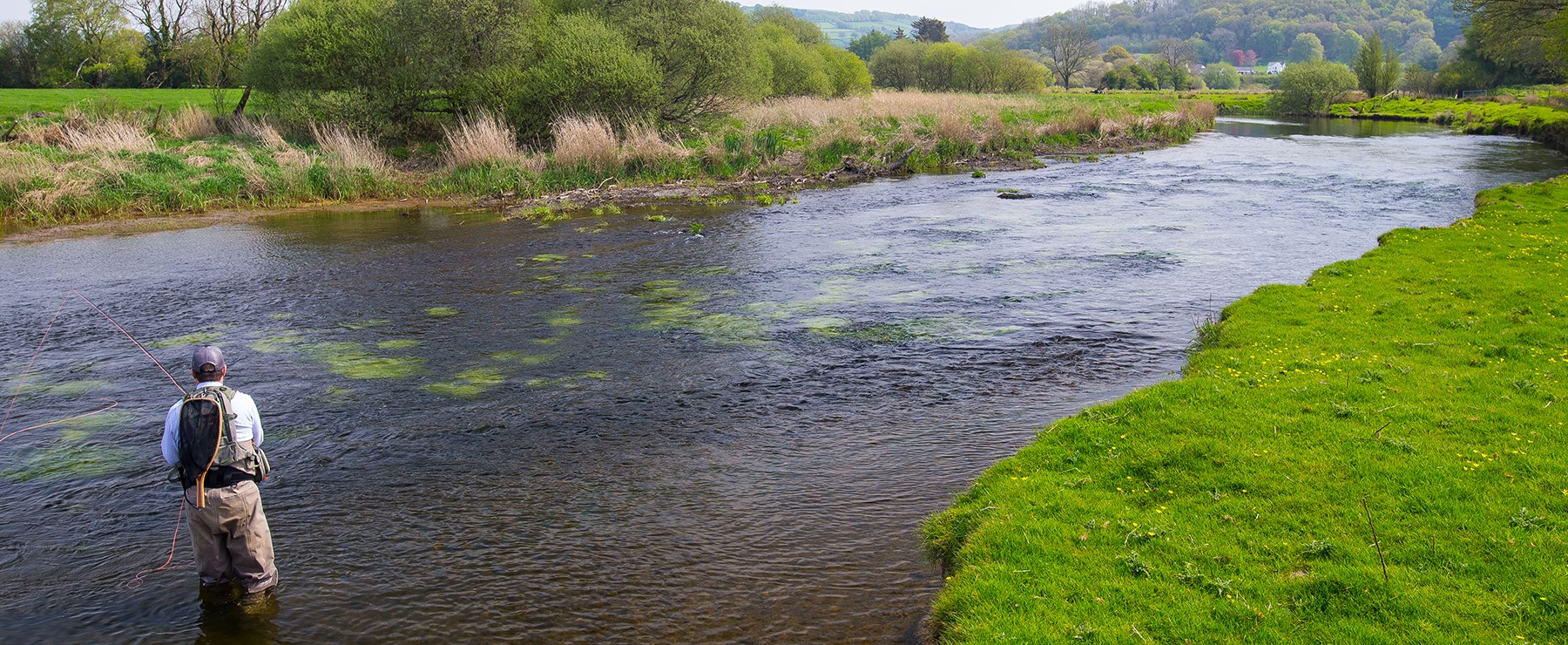WHAT TO BRING
With a myriad of different species present over many miles of river, knowing what to bring will hold you in good stead and help maximise your time and success when on the water. It will also help your enjoyment when on the water, as you will be perfectly equipped to what faces you.
SALMON – SPINNING
ROD: A good all-round spinning rod for the Teifi would be a 10ft rod rated for 15-30gm or so. The extra length can often be beneficial when fishing off a high bank or when fishing over bankside foliage.
REEL: A reel with a smooth drag is essential. Capacity wise, it should be capable of holding around 200 yds of 15 lbs mono.
LINE: 15 lbs line should be fished as a minimum, with 18 or 20 lbs being better suited for high water conditions. When fishing braid, then 25 – 30 lbs breaking strain should be used.
LURES: Size and colour will largely be dictated by the river height and colour. Rapalas in 7 & 9 CM work well in Firetiger, Brown-Trout, Rainbow-Trout and Gold. Flying C’s in Yellow, Red and black – either with silver or copper blades. Large Mepps are also productive and have their place, especially the Aglia Long in size 3 and in copper or silver.
SALMON – FLY
ROD: If the river is low, then the majority of the Teifi can be easily covered with a single hander – a 10 ft #8 would be perfect. However, many will find a switch rod to be more user friendly and will also cover higher water conditions. Again, a switch rod rated for a #8 line would be fine. For the lower-middle reaches and also when the river is high, then a 13 ft double-hander would be a better candidate, rated for a #8 or #9 line.
LINE & LEADER: There are many miles of river to cover. With this in mind, travelling light can be key. A multi-tip setup will hold you in good stead and give you a versatile approach in various situations. Do not fish under a 12 lbs leader, especially if the water is high. 15 lbs is more suitable, even stepping up to 20 lbs in high water conditions. Salmon are rarely leader shy.
FLIES: What a salmon takes is more often about size, depth and the speed the fly is fished at rather than the fly itself. The Teifi can carry a peat stain (often referred to as Tregaron water), with gold and yellow patterns often scoring well as a result. Tried and tested patterns such as the Willie Gun, Park Shrimp, Bann Special Shrimp, Silver Stoat, Cascade etc. will score well.
SEA TROUT (SEWIN) – SPINNING
ROD: The same rod as used for salmon will apply to sea trout. However, sometimes something slightly lighter is preferred with a 9-10 ft rod with a casting weight of 8-20 gm or so being ideal.
REEL: A reel with a smooth drag is essential. Capacity wise, it should be capable of holding around 200 yds of 12 lbs mono.
LINE: If spinning in a big flood then 15 lbs mono can be used with confidence. If fishing in a falling flood or lower water then you may fish slightly finer, opting for 10 -12 lbs mono. If fishing braid, then something in the 20 – 30 lbs bracket will suffice.
LURES: Size and colour will largely be dictated by the river height and colour. Rapalas in 5, 7 & 9 CM work well in Firetiger, Brown-Trout, Rainbow-Trout and Silver. Flying C’s in Yellow, Red and black – either with silver or copper blades. Mepps are also productive and have their place, especially the Aglia Long in size 1 – 3 and in copper or silver.
SEA TROUT (SEWIN) – FLY
ROD: When nighttime fishing a 10 ft rod for a #7 or #8 line is the perfect companion. Slightly shorter or longer will be fine too, of course, but you should not stray far from these line weights as they are advisable to cope with the flies commonly used and also the fish present.
LINES: A floating and intermediate line will cover the majority of situations. Beyond that, a set of salmon strength polyleaders are also worth carrying in densities from hover to fast sink. It is worth carrying short bellied fly lines or overloading your rod by one weight to make casting at night a lot easier.
LEADER: If fishing in a falling flood or early in the evening then 10 lbs mono or fluorocarbon can be used. When night fishing, never fish under 12 lbs breaking strain, with 15 lbs often being preferable – the fish are not leader shy at night.
FLIES: Tried and tested patterns such as the silver stoat, teal blue & silver, peter ross, medicine etc. work well and it often more about the length of the pattern than the pattern itself. As a general rule, fish flies under an inch long before dark, then an inch long and longer after dark. Some local patterns such as the Daioni, Mr Fish, along with muddlers, secret weapons, surface lures etc. will all score well in the right situation. Sea trout can also be caught in the daytime, especially on a falling flood. At such times you should use traditional wets, or longer flies such as sunrays shadows and monkey fly patterns. They can also be caught on nymphs and dry flies when targeting trout, which is an added bonus.
BROWN TROUT & GRAYLING
ROD: For dry fly fishing a 9 ft rod rated for a #3 or #4 line will be perfect for the majority of the fishing you are likely to encounter on the Teifi. If fishing the Cellan area, then perhaps an 8 ft rod would be better suited, but you won’t find the 9 ft rod out of place. When nymph fishing, a 10 ft rod rated for a #2 or #3 line would be perfect.
LINE: You only need a floating line. Vary the weight of the flies and leader length if you need to fish deeper.
LEADER: Diameter is important. You should carry spools of your favourite material in 0.10mm, 0.12mm, 0.15mm and 0.18mm. These will cover all eventualities. Only fish the lighter end of the spectrum when fishing tiny flies or when a fish is being particularly uncooperative. When nymphing, you rarely need to drop below 0.15mm diameter. When dry fly fishing, a tapered leader is a must – fish as long as you can physically handle (12 ft + being recommended, with 15 ft + being optimal). A long leader is often the key to success, enabling a stealthy approach to wary fish – all the fish are wild. They are not heavily fished for, but they are spooky to clumsy casts and human presence.
FLIES: Flies will vary throughout the season according to hatches. The Teifi now boasts a terrific fly hatch one more, largely growing in strength since Cypermethrin (sheep dip) was banned. There has been a remarkable recovery both in fly life and trout size since this has occurred, gaining momentum each season. March & April will be dominated with grannom, large dark olives and a small / sporadic hatch of march browns – not to be relied upon. The sport begins in earnest in May with the arrival of the olive uprights and yellow mays. These bring the river to life and provide some of the best sport of the whole season. Towards the end of May the blue winged olives will appear, which will carry us well throughout the summer. Along with the olives, you will also see a good hatch of a myriad of sedges, stoneflies and also some sporadic hatches later in the year of other olives such as pale wateries etc. There is a real banquet in store for the trout of the Teifi. Thankfully, the trout rarely focus exclusively on midges / gnats, even in the height of summer.
